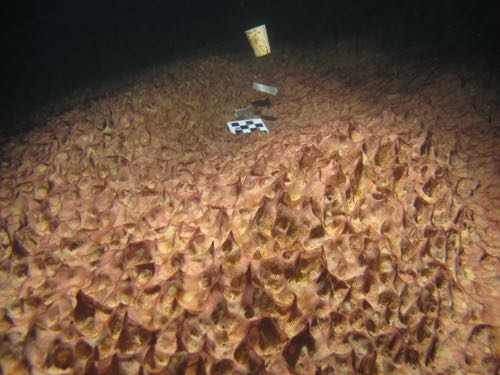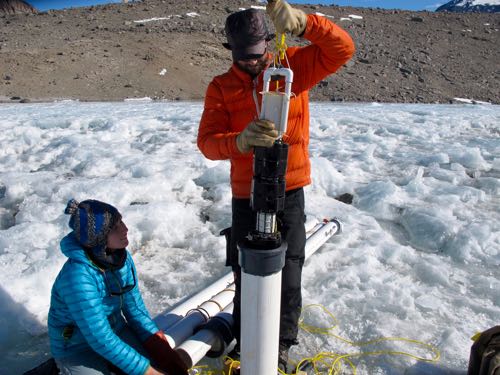Did our sediment traps work?
Its been over a year since my science team and I have left The Ice and returned to North America. However, that doesn’t mean that our science is finished! I thought I’d give you a follow up to our field season from last year.
A Recap
One of the major goals of our field work from last year was to investigate the question about how sedimentation would influence the growth of the microbial mat structures. We hypothesized that in areas with a lot of sediment being transported into the lake, the mats would be flatter, as opposed to pinnacled in shape with delicate webs.

With careful planning and a significant amount of tinkering, we were able to build and install PVC traps under the ice cover to capture the sediment being deposited into the lake over the course of one year. Antarctica is one of the harshest places on the planet, and the ice cover on Lake Joyce is pretty dynamic. All of us involved in the project looked forward to hearing that these sediment traps worked as we had planned. Here's a video I made last year of our sediment trap deployment:
The Good News
Our expedition leader, Tyler Mackey, returned to Lake Joyce in November, along with his fellow graduate student, Frances Rivera-Hernandez. As planned, they were able to plug the heated wires into a generator and melt through the ice to successfully extract the sediment traps!

Now What?
The preliminary investigations reveal that in areas where there is more sedimentation, there is less of the webbed, pinnacle-shaped microbial mats, which is what we hypothesized. This discovery, in turn, can help direct future investigations of microbial communities in the rock record. Work in these ice covered lakes has broad applications outside of Antarctica, from evaluating the effects of changing climate to helping interpret ancient ecosystems. In a recent email to me, Tyler writes of an upcoming project on the opposite pole in arctic Norway: “I am planning to look at ancient sediments from 630 million years ago, at a time when there was a global glaciation. I'm applying what we've learned from the lakes in Antarctica to these ancient settings, to help interpret whether the shallow areas had ice cover, and what the habitats could have been like for early animals. It is exciting to see how our work in Antarctica can be applied to these sediments!”
As typically happens in science, one answer leads to 100 more questions and investigations!
- < prev
- 66 of 66


Comments